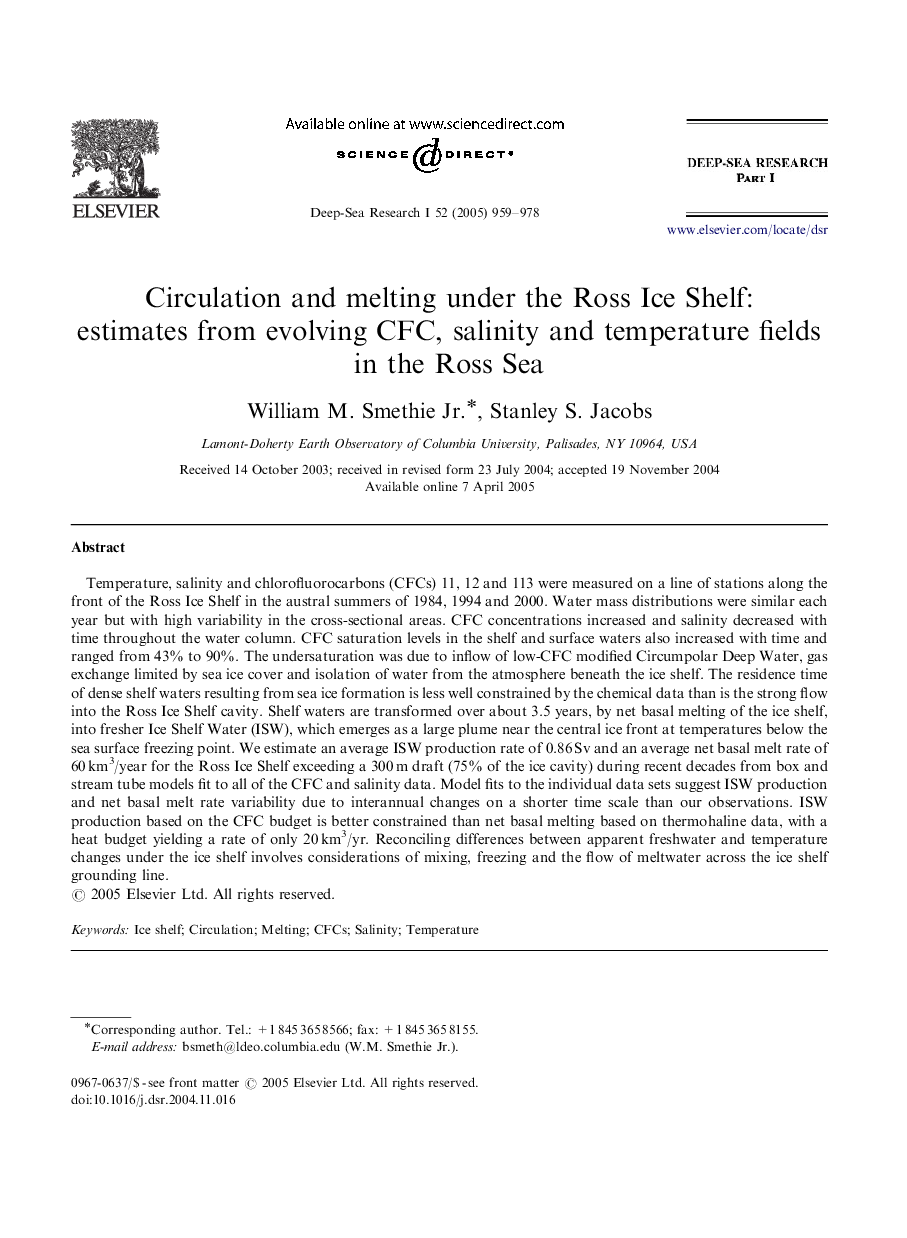| کد مقاله | کد نشریه | سال انتشار | مقاله انگلیسی | نسخه تمام متن |
|---|---|---|---|---|
| 9479677 | 1326143 | 2005 | 20 صفحه PDF | دانلود رایگان |
عنوان انگلیسی مقاله ISI
Circulation and melting under the Ross Ice Shelf: estimates from evolving CFC, salinity and temperature fields in the Ross Sea
دانلود مقاله + سفارش ترجمه
دانلود مقاله ISI انگلیسی
رایگان برای ایرانیان
موضوعات مرتبط
مهندسی و علوم پایه
علوم زمین و سیارات
زمین شناسی
پیش نمایش صفحه اول مقاله

چکیده انگلیسی
Temperature, salinity and chlorofluorocarbons (CFCs) 11, 12 and 113 were measured on a line of stations along the front of the Ross Ice Shelf in the austral summers of 1984, 1994 and 2000. Water mass distributions were similar each year but with high variability in the cross-sectional areas. CFC concentrations increased and salinity decreased with time throughout the water column. CFC saturation levels in the shelf and surface waters also increased with time and ranged from 43% to 90%. The undersaturation was due to inflow of low-CFC modified Circumpolar Deep Water, gas exchange limited by sea ice cover and isolation of water from the atmosphere beneath the ice shelf. The residence time of dense shelf waters resulting from sea ice formation is less well constrained by the chemical data than is the strong flow into the Ross Ice Shelf cavity. Shelf waters are transformed over about 3.5 years, by net basal melting of the ice shelf, into fresher Ice Shelf Water (ISW), which emerges as a large plume near the central ice front at temperatures below the sea surface freezing point. We estimate an average ISW production rate of 0.86Â Sv and an average net basal melt rate of 60Â km3/year for the Ross Ice Shelf exceeding a 300Â m draft (75% of the ice cavity) during recent decades from box and stream tube models fit to all of the CFC and salinity data. Model fits to the individual data sets suggest ISW production and net basal melt rate variability due to interannual changes on a shorter time scale than our observations. ISW production based on the CFC budget is better constrained than net basal melting based on thermohaline data, with a heat budget yielding a rate of only 20Â km3/yr. Reconciling differences between apparent freshwater and temperature changes under the ice shelf involves considerations of mixing, freezing and the flow of meltwater across the ice shelf grounding line.
ناشر
Database: Elsevier - ScienceDirect (ساینس دایرکت)
Journal: Deep Sea Research Part I: Oceanographic Research Papers - Volume 52, Issue 6, June 2005, Pages 959-978
Journal: Deep Sea Research Part I: Oceanographic Research Papers - Volume 52, Issue 6, June 2005, Pages 959-978
نویسندگان
William M. Jr., Stanley S. Jacobs,